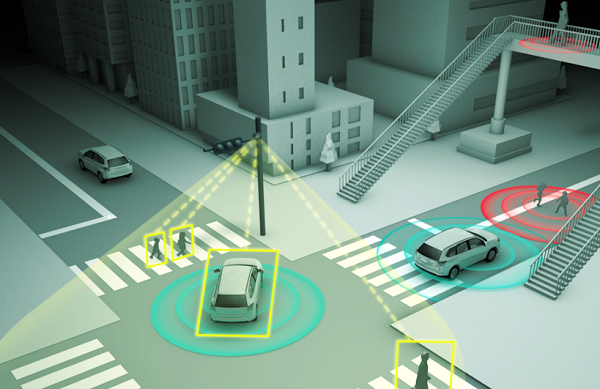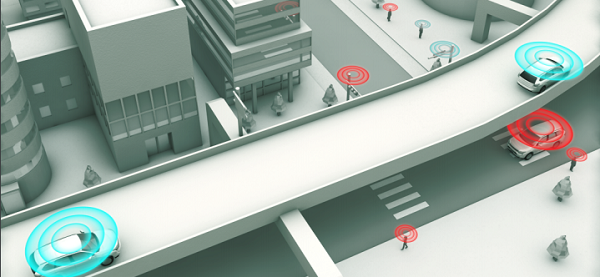Intelligent Transport Systems: Panasonic’s Work
Much of the technology needed to make smart roads and smart cars already exists—from vehicle to pedestrian radar to car to infrastructure communication to multi-object detection using small, powerful sensors. In Japan, Panasonic has significant experience developing connected transportation and smart cities. It has prototyped and applied data from intelligent transportation systems to help make roads and cars safer.
A trailblazer in building connected transport and developing smart cities there, Panasonic is for the first time apply its integrated, intelligent automotive and traffic management technologies and other expertise to a connected transportation pilot in the United States and Colorado. Panasonic, a global leader in smart and sustainable automotive and infrastructure technology solutions, today announced that it would partner with the Colorado Department of Transportation to build a connected transportation program in which real-time data would be shared across vehicles, infrastructure and people to improve safety and mobility on the road. Here is a look at three technologies Panasonic is working on in Japan to use Big Data to make transportation smarter and safer.
Radar that Helps Cars “See” in Bad Weather
Crashes often occur at intersections because these are locations where two or more roads cross and where drivers perform activities such as turning left, or crossing over, which create potential for error. Anything that can help drivers see pedestrians or other vehicles before an accident occurs can help reduce the danger of intersections.
Radar-based driver assistance systems are already in use in collision warning systems, blind-spot monitoring, and back-up parking assistance and other functions. These systems can enhance safety, but a more targeted radar effort offers the possibility of even better results.
In Japan, work is being done on 79GHz radar that operates at a higher frequency than the technology behind collision warning and other current driver assistance systems. Advantages of a higher frequency bandwidth include greater capacity for distinguishing between different objects. The 79GHz radar technology can help make pedestrians hidden from a driver’s view visible, and it can detect numerous pedestrians and vehicles. It has a wide viewing angle for detection, and a highly accurate sensor that can reveal multiple objects even in bad conditions such as at night or in rain. Read more about radar’s role in vehicle to person communication.
Avoiding Crashes Through V2X Communication
V2X wireless communication makes moving vehicles and pedestrians visible. This technology enables vehicle to vehicle signals, vehicle to pedestrian communication and information transfer between vehicles to infrastructure. V2X can help prevent traffic accidents by warning drivers and pedestrians of dangerous situations. Learn more about the new driving support system.
Multi-Object-Detection Technology
This system uses artificial intelligence to make pedestrians and vehicles visible within camera images. Multi object detection technology automatically learns behavioral characteristics of objects captured by a vehicle camera, even if part of their body is hidden from the camera.
Innovators from Panasonic presented their ideas on radar, wireless communication and detection technology and other new ways to make highways think in October at the 23rd World Congress on Intelligent Transport Systems in Melbourne, Australia. This video has more details on the show.

